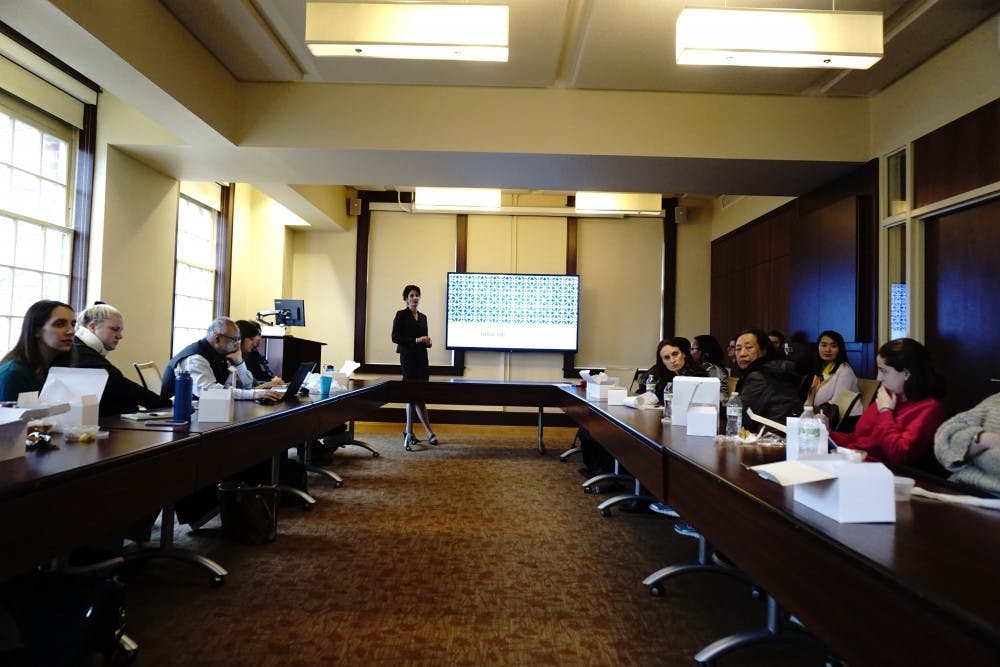Amanda Reid, professor in the UNC School of Media and Journalism, spoke at a luncheon Friday about copyright policy.
Reid specializes in copyright law and the intersection between copyright and the First Amendment. She worked for media law company Holland & Knight before clerking for two federal judges.
Reid said U.S. copyright law protects an original work of authorship fixed in a tangible medium of expression. She believes it serves the purpose of promoting the progress of science.
“Copyright is an instrumental tool. It’s a tool to achieve a purpose,” Reid said.
When work is granted a copyright, the author of that work possesses exclusive rights, Reid said. This means other people cannot reproduce the work or make a derivative of it, such as creating a translation or making a book into a movie. Granting exclusive rights pushes people to create.
“Exclusive rights are granted to incentivize, to promote the production and public dissemination of creative works,” Reid said.
A copyright gives a creator the license to their creative works. The endgame of copyright is to generate more creative works that can be distributed. However, copyright can be seen in both a positive and negative light. It creates winners and losers in the marketplace, Reid said.
“It also has the power to foster new business, but it can also be used as a tool to thwart it,” Reid said.
Sony and Google are two companies that have experienced the hardships of copyright. Both companies litigated for almost a decade to see if their technology was allowed to even be on the market. Reid said the Supreme Court looked at Sony’s Betamax and determined there were non-infringing and infringing usages but more positive uses for the technology, so the court allowed it. The decision was later overruled by another decision, involving a similar situation with Grokster, a website for downloading music and movies.



